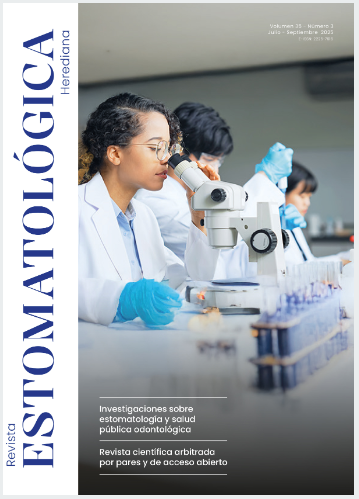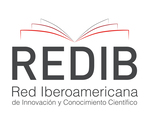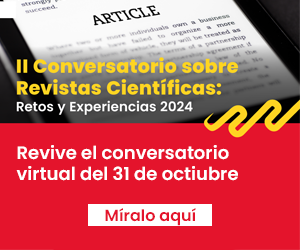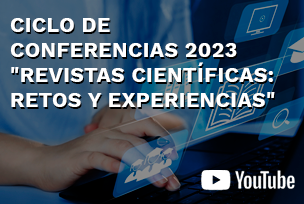Effects of hyaluronic acid on mesenchymal stem cells and its potential use as a cryopreservative: a systematic review
DOI:
https://doi.org/10.20453/reh.v35i3.7104Keywords:
hyaluronic acid, stem cells, cell differentiation, cell survivalAbstract
Hyaluronic acid (HA) is a substance commonly found in the human body that is involved in various biological processes. In 2021 and 2022, Asian and European researchers employed it as a cryopreservative for dental pulp progenitor cells progenitor cells, reporting high viability rates. This review aims to highlight the potential of HA as a preservative agent. Scientific literature available in PubMed, Scientific Electronic Library Online, and Medical Subject Headings was reviewed since 2000, identifying 28 publications of experimental studies that support the use of HA as a cryopreservative agent.
Downloads
References
Bustos-Araya S, Montenegro-Matamoros Y, Swirgsde-Baltodano C, Trigueros-Hernández D, Vargas-González R, Mora-Román JJ. Obtención de células madre mesenquimales y participación de estas en la modulación de la respuesta inmune. Tecnol Marcha [Internet]. 2018; 31(3): 29-40. Disponible en: https://doi.org/10.18845/tm.v31i3.3899
Arias ME, Felmer R. Biología de las células madre embrionarias (ES cells) en distintas especies: potenciales aplicaciones en biomedicina. Arch Med Vet [Internet]. 2009; 41(3): 185-195. Disponible en: http://doi.org/10.4067/S0301-732X2009000300002
Astudillo-Ortiz E. Regeneración de la pulpa dental. Una revisión de la literatura. Rev ADM [Internet]. 2018; 75(6): 350-357. Disponible en: https://www.medigraphic.com/pdfs/adm/od-2018/od186i.pdf
Prósper F, Verfaillie CM. Células madre adultas. An Sist Sanit Navar [Internet]. 2003; 26(3): 345-356. Disponible en: https://scielo.isciii.es/scielo.php?script=sci_arttext&pid=S1137-66272003000500002&lng=es&tlng=es
Mata-Miranda M, Vázquez-Zapién GJ, Sánchez-Monroy V. Generalidades y aplicaciones de las células madre. Perinatol Reprod Hum [Internet]. 2013; 27(3): 194-199. Disponible en: https://www.medigraphic.com/cgi-bin/new/resumen.cgi?IDARTICULO=44713
Verheijen M, Lienhard M, Schrooders Y, Clayton O, Nudischer R, Boerno S, et al. DMSO induces drastic changes in human cellular processes and epigenetic landscape in vitro. Sci Rep [Internet]. 2019; 9: 4641. Disponible en: https://doi.org/10.1038/s41598-019-40660-0
Xu Q, Torres JE, Hakim M, Babiak PM, Pal P, Battistoni CM, et al. Collagen- and hyaluronic acid-based hydrogels and their biomedical applications. Mater Sci Eng R Rep [Internet]. 2021; 146: 100641. Disponible en: https://doi.org/10.1016/j.mser.2021.100641
Fernández S. El rol del ácido hialurónico en el metabolismo oxidativo y en los sistemas de señales intracelulares en la capacitación del espermatozoide criopreservado bovino [tesis de doctorado en Internet]. Ciudad de Buenos Aires: Universidad de Buenos Aires; 2016. Disponible en: https://repositoriouba.sisbi.uba.ar/gsdl/collect/avaposgra/index/assoc/HWA_2204.dir/2204.PDF
Figueirêdo ES, Macedo AC, Figueirêdo PF, Figueirêdo R. Aplicações oftalmológicas do ácido hialurônico. Arq Bras Oftalmol [Internet]. 2010; 73(1): 92-95. Disponible en: https://doi.org/10.1590/S0004-27492010000100018
Page MJ, McKenzie JE, Bossuyt PM, Boutron I, Hoffmann TC, Mulrow CD, et al. Declaración PRISMA 2020: una guía actualizada para la publicación de revisiones sistemáticas. Rev Esp Cardiol [Internet]. 2021; 74(9): 790-799. Disponible en: https://doi.org/10.1016/j.recesp.2021.06.016
Flórez MT, Valverde MD. La Colaboración Cochrane. Rehabil [Internet]. 2001; 35(6): 357-364. Disponible en: https://doi.org/10.1016/S0048-7120(01)73215-X
Gerecht S, Burdick JA, Ferreira LS, Townsend SA, Langer R, Vunjak‐Novakovic G. Hyaluronic acid hydrogel for controlled self-renewal and differentiation of human embryonic stem cells. Proc Natl Acad Sci USA [Internet]. 2007; 104(27): 11298-11303. Disponible en: https://doi.org/10.1073/pnas.0703723104
Chung C, Burdick JA. Influence of three-dimensional hyaluronic acid microenvironments on mesenchymal stem cell chondrogenesis. Tissue Eng Part A [Internet]. 2009; 15(2): 243-254. Disponible en: https://doi.org/10.1089/ten.tea.2008.0067
Shukla S, Nair R, Rolle MW, Braun KR, Chan CK, Johnson PY, et al. Synthesis and organization of hyaluronan and versican by embryonic stem cells undergoing embryoid body differentiation. J Histochem Cytochem [Internet]. 2010; 58(4): 345-358. Disponible en: http://doi.org/10.1369/jhc.2009.954826
Gojgini S, Tokatlian T, Segura T. Utilizing cell–matrix interactions to modulate gene transfer to stem cells inside hyaluronic acid hydrogels. Mol Pharm [Internet]. 2011; 8(5): 1582-1591. Disponible en: https://doi.org/10.1021/mp200171d
Schwartz Z, Griffon DJ, Fredericks LP, Lee HB, Weng HY. Hyaluronic acid and chondrogenesis of murine bone marrow mesenchymal stem cells in chitosan sponges. Am J Vet Res [Internet]. 2011; 72(1): 42-50. Disponible en: https://doi.org/10.2460/ajvr.72.1.42
Chang CY, Chan AT, Armstrong PA, Luo HC, Higuchi T, Strehin IA, et al. Hyaluronic acid-human blood hydrogels for stem cell transplantation. Biomaterials [Internet]. 2012; 33(32): 8026-8033. Disponible en: https://doi.org/10.1016/j.biomaterials.2012.07.058
Turner RA, Mendel G, Wauthier E, Barbier C, Reid LM. Hyaluronan-supplemented buffers preserve adhesion mechanisms facilitating cryopreservation of human hepatic stem/progenitor cells. Cell Transplant [Internet]. 2012; 21(10): 2257-2266. Disponible en: https://doi.org/10.3727/096368912X637000
Mohand-Kaci F, Assoul N, Martelly I, Allaire E, Zidi M. Optimized hyaluronic acid–hydrogel design and culture conditions for preservation of mesenchymal stem cell properties. Tissue Eng Part C Methods [Internet]. 2013; 19(4): 288-298. Disponible en: https://doi.org/10.1089/ten.tec.2012.0144
Lee SJ, Park SH, Kim YI, Hwang S, Kwon PM, Han IS, et al. Adult stem cells from the hyaluronic acid-rich node and duct system differentiate into neuronal cells and repair brain injury. Stem Cells Dev [Internet]. 2014; 23(23): 2831-2840. Disponible en: https://doi.org/10.1089/scd.2014.0142
Sawatjui N, Damrongrungruang T, Leeanansaksiri W, Jearanaikoon P, Hongeng S, Limpaiboon T. Silk fibroin/gelatin-chondroitin sulfate-hyaluronic acid effectively enhances in vitro chondrogenesis of bone marrow mesenchymal stem cells. Mater Sci Eng C [Internet]. 2015; 52: 90-96. Disponible en: https://doi.org/10.1016/j.msec.2015.03.043
Moreno A, Martínez A, Olmedillas S, Bello S, de Miguel F. Efecto del ácido hialurónico sobre células madre mesenquimales derivadas de tejido adiposo. Evaluación biológica in vitro. Rev Esp Cir Ortop Traumatol [Internet]. 2015; 59(4): 215-221. Disponible en: https://doi.org/10.1016/j.recot.2014.10.004
Jensen J, Kraft DC, Lysdahl H, Foldager CB, Chen M, Kristiansen AA, et al. Functionalization of polycaprolactone scaffolds with hyaluronic acid and β-TCP facilitates migration and osteogenic differentiation of human dental pulp stem cells in vitro. Tissue Eng Part A [Internet]. 2015; 21(3-4): 729-739. Disponible en: https://doi.org/10.1089/ten.tea.2014.0177
Mineda K, Feng J, Ishimine H, Takada H, Doi K, Kuno S, et al. Therapeutic potential of human adipose-derived stem/stromal cell microspheroids prepared by three-dimensional culture in non-cross-linked hyaluronic acid gel. Stem Cells Transl Med [Internet]. 2015; 4(12): 1511-1522. Disponible en: https://doi.org/10.5966/sctm.2015-0037
Huang D, Wang R, Yang S. Cogels of hyaluronic acid and acellular matrix for cultivation of adipose-derived stem cells: potential application for vocal fold tissue engineering. BioMed Res Int [Internet]. 2016; 2016(1): 6584054. Disponible en: https://doi.org/10.1155/2016/6584054
Aleksander-Konert E, Paduszyński P, Zajdel A, Dzierżewicz Z, Wilczok A. In vitro chondrogenesis of Wharton’s jelly mesenchymal stem cells in hyaluronic acid-based hydrogels. Cell Mol Biol Lett [Internet]. 2016; 21: 11. Disponible en: https://doi.org/10.1186/s11658-016-0016-y
Nevi L, Carpino G, Costantini D, Cardinale V, Riccioni O, Di Matteo S, et al. Hyaluronan coating improves liver engraftment of transplanted human biliary tree stem/progenitor cells. Stem Cell Res Ther [Internet]. 2017; 8: 68. Disponible en: https://doi.org/10.1186/s13287-017-0492-7
Schmidt J, Pilbauerova N, Soukup T, Suchankova-Kleplova T, Suchanek J. Low molecular weight hyaluronic acid effect on dental pulp stem cells in vitro. Biomolecules [Internet]. 2020; 11(1): 22. Disponible en: https://doi.org/10.3390/biom11010022
Ocampo PE, Vallejo V, Montoya LM, Rocha NS, Landim FC, Rahal SC. Potential effect of hyaluronic acid and triamcinolone acetate, alone or combined, on chondrogenic differentiation of mesenchymal stem cells. Rev Colomb Cienc Pec [Internet]. 2021; 34(3): 212-223. Disponible en: https://doi.org/10.17533/udea.rccp.v34n3a06
Luo Y, Wang AT, Zhang QF, Liu RM, Xiao JH. RASL11B gene enhances hyaluronic acid-mediated chondrogenic differentiation in human amniotic mesenchymal stem cells via the activation of Sox9/ERK/smad signals. Exp Biol Med [Internet]. 2020; 245(18): 1708-1721. Disponible en: https://doi.org/10.1177/1535370220944375
Liu G, Wu R, Yang B, Shi Y, Deng C, Atala A, et al. A cocktail of growth factors released from a heparin hyaluronic-acid hydrogel promotes the myogenic potential of human urine-derived stem cells in vivo. Acta Biomater [Internet]. 2020; 107: 50-64. Disponible en: https://doi.org/10.1016/j.actbio.2020.02.005
Della Sala F, di Gennaro M, Lista G, Messina F, Ambrosio L, Borzacchiello A. Effect of hyaluronic acid on the differentiation of mesenchymal stem cells into mature type II pneumocytes. Polymers [Internet]. 2021; 13(17): 2928. Disponible en: https://doi.org/10.3390/polym13172928
Lee TW, Lee GW, An S, Seong KY, Lee JS, Yang SY. Enhanced cellular cryopreservation by biopolymer-associated suppression of RhoA/ROCK signaling pathway. Materials [Internet]. 2021; 14(20): 6056. Disponible en: https://doi.org/10.3390/ma14206056
Satin AM, Norelli JB, Sgaglione NA, Grande DA. Effect of combined leukocyte-poor platelet-rich plasma and hyaluronic acid on bone marrow–derived mesenchymal stem cell and chondrocyte metabolism. Cartilage [Internet]. 2019; 13(suppl 2): 267S-276S. Disponible en: https://doi.org/10.1177/1947603519858739
Shen CC, Yang MY, Chang KB, Tseng CH, Yang YP, Yang YC, et al. Fabrication of hyaluronic acid-gold nanoparticles with chitosan to modulate neural differentiation of mesenchymal stem cells. J Chin Med Assoc [Internet]. 2021; 84(11): 1007-1018. Disponible en: https://doi.org/10.1097/JCMA.0000000000000589
Kaleka C, Debieux P, Antonioli E, Zucconi E, Cohen M, Ferretti M. Impacto do ácido hialurônico na viabilidade das células mesenquimais derivadas do tecido adiposo cultivadas em membrana de colágeno tipo I/III. Rev Bras Ortop [Internet]. 2022; 57(6): 1022-1029. Disponible en: https://doi.org/10.1055/s-0041-1740198
Pilbauerova N, Schmidt J, Soukup T, Prat T, Nesporova K, Velebny V, et al. Innovative approach in the cryogenic freezing medium for mesenchymal stem cells. Biomolecules [Internet]. 2022; 12(5): 610. Disponible en: https://doi.org/10.3390/biom12050610
Bar JK, Lis-Nawara A, Kowalczyk T, Grelewski PG, Stamnitz S, Gerber H, et al. Osteogenic potential of human dental pulp stem cells (hDPSCs) growing on poly L-lactide-co-caprolactone and hyaluronic acid (HYAFF-11TM) scaffolds. Int J Mol Sci [Internet]. 2023; 24(23): 16747. Disponible en: https://doi.org/10.3390/ijms242316747
Ferroni L, D’Amora U, Gardin C, Leo S, Dalla Paola L, Tremoli E, et al. Stem cell-derived small extracellular vesicles embedded into methacrylated hyaluronic acid wound dressings accelerate wound repair in a pressure model of diabetic ulcer. J Nanobiotechnol [Internet]. 2023; 21: 469. Disponible en: https://doi.org/10.1186/s12951-023-02202-9
Yong KW, Choi JR, Wan Safwani WK. Biobanking of human mesenchymal stem cells: future strategy to facilitate clinical applications. En: Karimi-Busheri F, Weinfeld M, editores. Biobanking and Cryopreservation of Stem Cells: Advances in Experimental Medicine and Biology. Cham: Springer; 2016. pp. 99-110. Disponible en: https://doi.org/10.1007/978-3-319-45457-3_8
Khetan S, Corey O. Maintenance of stem cell viability and differentiation potential following cryopreservation within 3-dimensional hyaluronic acid hydrogels. Cryobiology [Internet]. 2019; 90: 83-88. Disponible en: https://doi.org/10.1016/j.cryobiol.2019.08.001
Cherres FZ. Banco público de células madre de sangre de cordón umbilical: aspectos clínicos, legales, éticos y económicos [tesis de segunda especialidad en Internet]. Lima: Universidad Peruana Cayetano Heredia; 2022. Disponible en: https://repositorio.upch.edu.pe/handle/20.500.12866/12955
Downloads
Published
How to Cite
Issue
Section
License
Copyright (c) 2025 Saúl Adrianzén, Fernando Pérez

This work is licensed under a Creative Commons Attribution 4.0 International License.
The authors retain the copyright and cede to the journal the right of first publication, with the work registered with the Creative Commons License, which allows third parties to use what is published as long as they mention the authorship of the work, and to the first publication in this journal.























